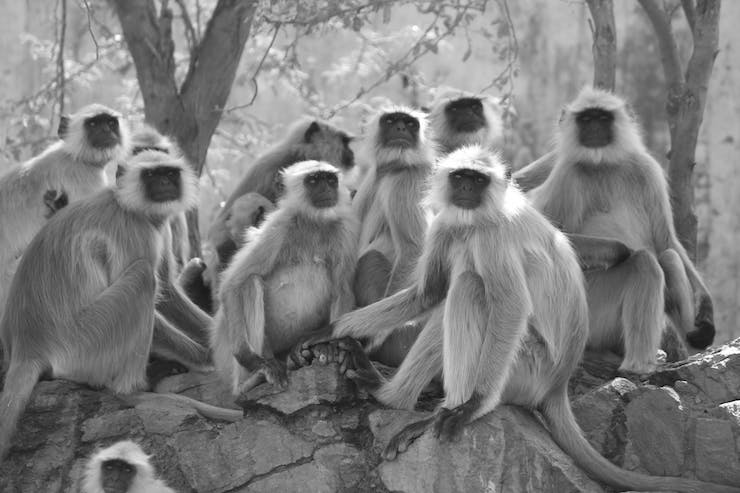
Unless you are growing food inside a controlled greenhouse you are sure to loose some of your crop to pests. For insect pests farmers can spray approved pesticides that are very effective. For other pests like rodents, deer, birds, and other wild animals there are a variety of tools at a farmer’s disposal. Wire cages can be used to keep ground pests away, bird boxes that send out predator bird calls, or motion sensor lights can also scare away animals. But if the pest a farmer is dealing with is smarter than the average deer, rabbit, or chipmunk its time to think outside of the box.
In Oita, Japan farmers lost ¥2.2 million last year to crop damage from Japanese macaques, or Snow Monkeys. Not far from Oita’s agricultural area is the Takasakiyama Monkey Park, a popular monkey reserve at the base of Mount Takasaki. The mountain that reaches 628 meters high is home to approximately 1,500 wild macaques. These wild animals are free to come down to the park as they like to get fed along with some of the park’s permanent residents. These monkeys have become so accustomed to coming out of their forest sanctuary, being around humans, and being fed that they often don’t restrict their travels to within the park’s borders. The macaques are freely going into the farms and feasting on loquats, figs, and mandarin oranges.
The Oita Municipal Government has put millions into farm losses from the monkey. But as the monkeys are highly intelligent and used to humans little was helping. One successful program was when farmers used bid handlers and began releasing a trained hawk over the fields last year. The macaques were naturally fearful of the predator bird. When the hawk screeched and swooped near them, the macaques would flee the farm. Though this method was showing some promise, it was unreliable. Being able to direct the hawks was creating more work than was cost and time effective. But the hawk led officials to the idea of using a drone to scare off the monkeys. An official from Tokyo said, “We’d like to try chasing away the monkeys with sound-emitting drones.”
The agricultural sector is one of the biggest users of drone technology. Drones are helping farmers track and monitor livestock and crop health. Drones are being used to asses the hydration levels of fields and monitor plant diseases. Drones are being used to plant crops and spread pesticides. Agricultural drones are saving farmers countless hours and dollars, all without jeopardizing jobs. But, the way farmers in Oita plan to use drones for pest management is quite unique. They are taking a drone and disguising it as a predatory hawk.
The drone they are using has six rotors, a camera, and a speaker. While an operator pilots the drone through the assistance of the camera’s live feed, the speaker sends out the warning calls of a hawk. But that’s not the only sound coming from the drone. Besides the bird calls and the sound of the rotors, the speaker also plays the sounds of a monkey screaming in distress. The idea is that once the pilot locates monkeys on the farm, the drone can swiftly be flown to that area, scaring off the macaques with the combination of frightening sounds from it’s speaker. If that isn’t enough, officials have employed two more strategies to this drone. They have decorated the drone to look like a hawk. The drone’s white body is camouflaged in shades of brown to mimic a hawk’s feathers. The front of the drone is left white, like the white head of a hawk. To further enhance the deception large, bulging, yellow eyes and a red and yellow beak have been attached to the front of the drone. And as a final measure, suspended underneath the drone is a stuffed animal monkey. Essentially, the drone looks and sounds like a hawk with a screaming monkey clutched in it’s talons.
Currently officials are testing this monkey scaring drone procedure out. They plan to run at least 20 trials to see the drone’s effectiveness. As a part of these trials, the Japanese government will also set up special drone testing zones to further test ways of using drones. Japan has very strict rules when it comes to flying drones in open spaces. With the introduction of the hawk drone and soon to be test sites, an official from Tokyo stated, “We hope to conduct experiments on a wide range of uses.” If the drone is successful in scaring off the macaques it will save the country millions in crop losses.



